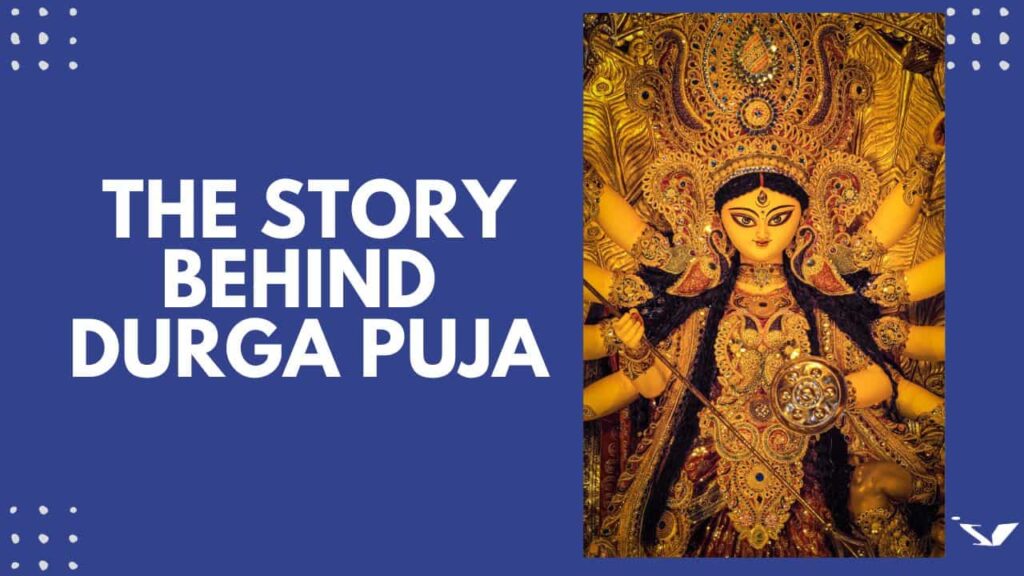Durga Puja is an incredible festival celebrated in India, especially in the eastern part of the country. It’s not just any festival; it’s a big deal. Let’s dive into what makes Durga Puja so special, from its history and rituals to the grand celebrations that surround it.
The Story Behind Durga Puja
A Legendary Battle
Long ago, there was a fierce battle between a powerful demon named Mahishasura and the goddess Durga. This epic showdown lasted nine days and nights. Durga, armed with divine weapons from other gods, defeated Mahishasura, marking a victory of good over evil. Durga Puja celebrates this triumph.
Mark Your Calendars: Durga Puja Date List for a Joyous Celebration!
How It All Started
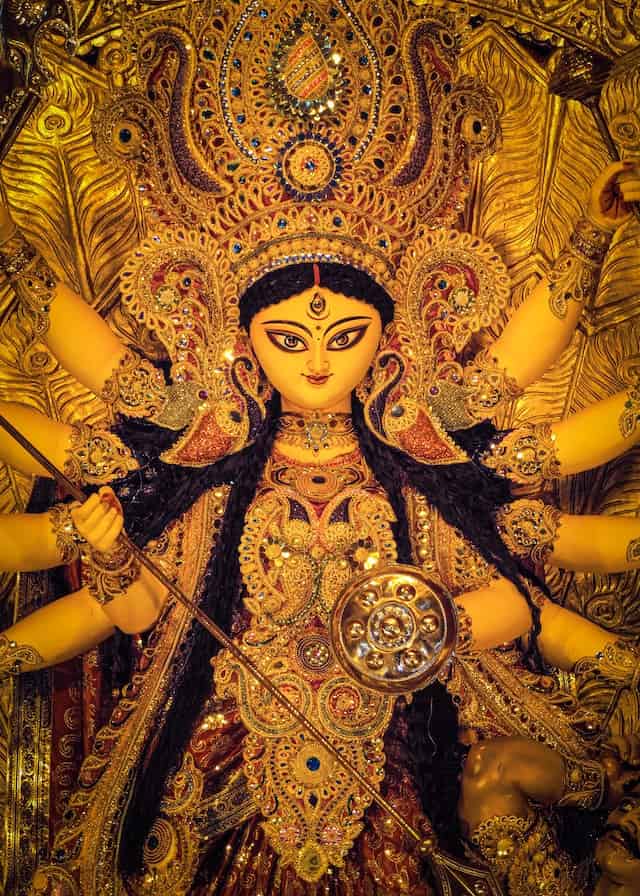
Durga Puja goes way back to the 16th century when a king named Raja Nabakrishna Deb in Calcutta (now Kolkata) started it. Initially, it was a fancy celebration for the rich, but it eventually became a public party that brought people from all walks of life together.
The Grand Party
Getting Ready
Preparing for Durga Puja is like getting ready for a big show. Skilled artists spend months creating stunning idols of Goddess Durga, and the temporary structures called “pandals” where these idols are placed are beautifully decorated with eye-catching themes.
A Cultural Extravaganza
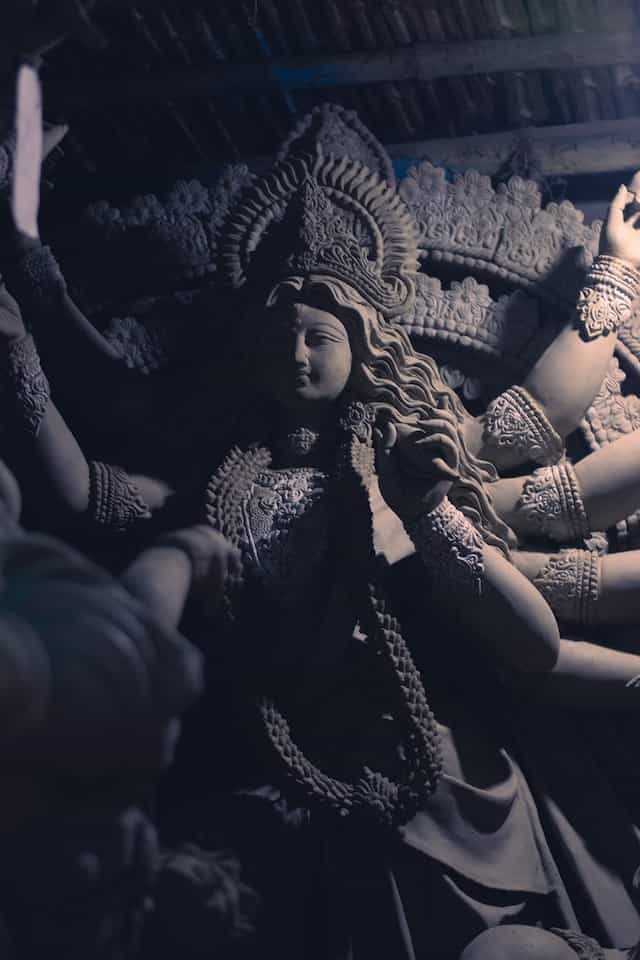
This festival isn’t just about worship; it’s also about celebrating art and culture. There are traditional dances, music performances, and theater shows happening in and around the pandals. It’s a time when the streets are filled with the beat of traditional drums and the enchanting sounds of traditional instruments.
Food Galore
If you’re a food lover, Durga Puja is paradise. The streets are lined with stalls serving delicious Bengali dishes like rasgulla, sandesh, and shorshe ilish (a tasty fish curry). People travel from far and wide just to savor these mouthwatering treats.
The Rituals and Traditions
Welcoming the Goddess
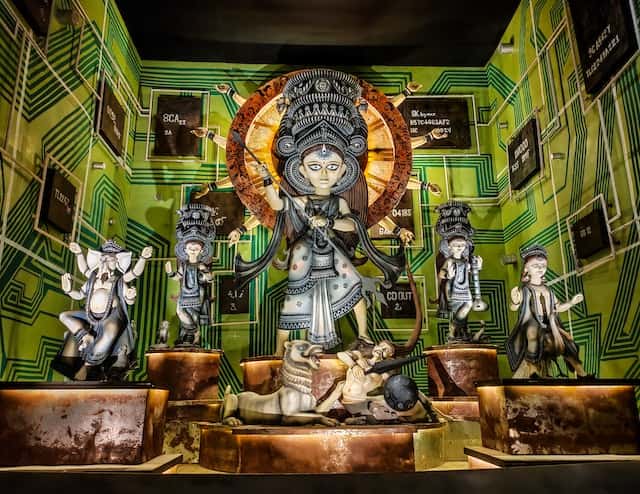
The festival kicks off with Mahalaya, which is like rolling out the red carpet for the goddess. It’s the day when it’s believed that Goddess Durga comes down to Earth with her four children. People perform a ritual called Tarpan to seek their blessings.
Days of Worship
The main celebrations happen on the last three days of the festival. Each day is dedicated to worshipping Goddess Durga in different forms. There are lots of rituals, like offering flowers, incense, and sweets, while hymns and mantras are chanted.
Saying Goodbye
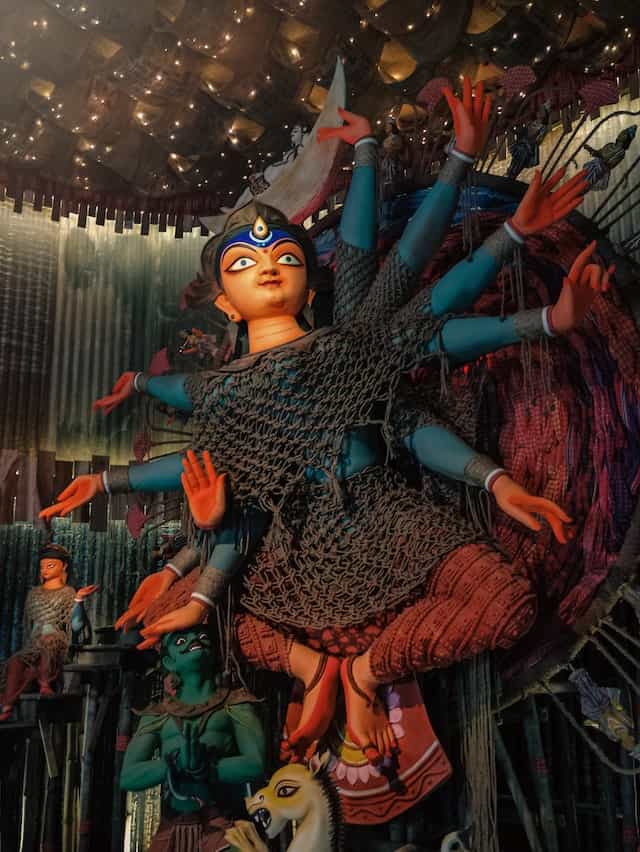
On the tenth day, known as Vijaya Dashami, it’s time to bid farewell to the goddess. The idol of Durga is immersed in water, symbolizing her return to the heavens. The sound of drums and the tears of devotees create an emotional atmosphere as the goddess departs.
What Durga Puja Means
A Spiritual Time
For those who are deeply religious, Durga Puja is a time for connecting with the divine. It’s about seeking strength and courage from the goddess and reflecting on the triumph of good over evil.
Bringing People Together
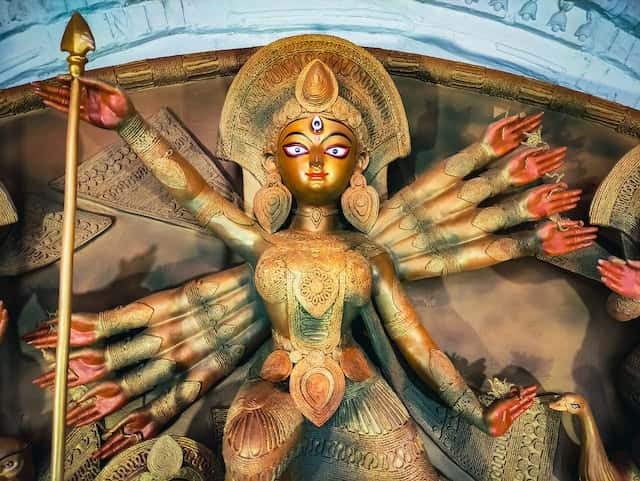
Durga Puja isn’t limited to any one group; it brings people of all backgrounds together. It’s a time when communities come together to celebrate their shared culture and heritage. It promotes unity and friendship among people from diverse backgrounds.
Boosting the Economy
This celebration isn’t only about customs; it also helps the economy a lot. It provides work for artists, skilled workers, and sellers. Tourism also increases because people from all over the world visit India to enjoy the beauty of Durga Puja.
In Conclusion
Durga Puja is more than just a festival; it’s a spectacular blend of devotion, culture, and artistry. It’s a time when the past and present merge to create an atmosphere of pure joy and spirituality. The incredible celebrations, the beautiful idols, and the unity among people make Durga Puja truly one-of-a-kind.
Picture credits https://pixabay.com/ ; https://www.pexels.com/
Like this post?
Give a glance to our other posts too : https://indyviews.in/blogsy/
